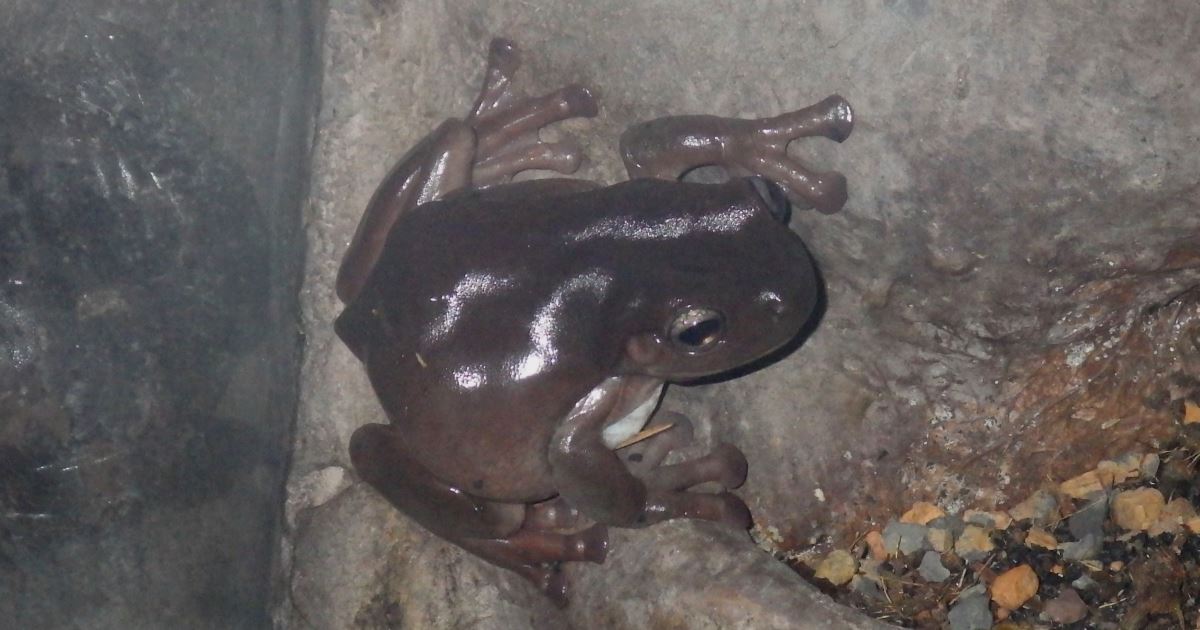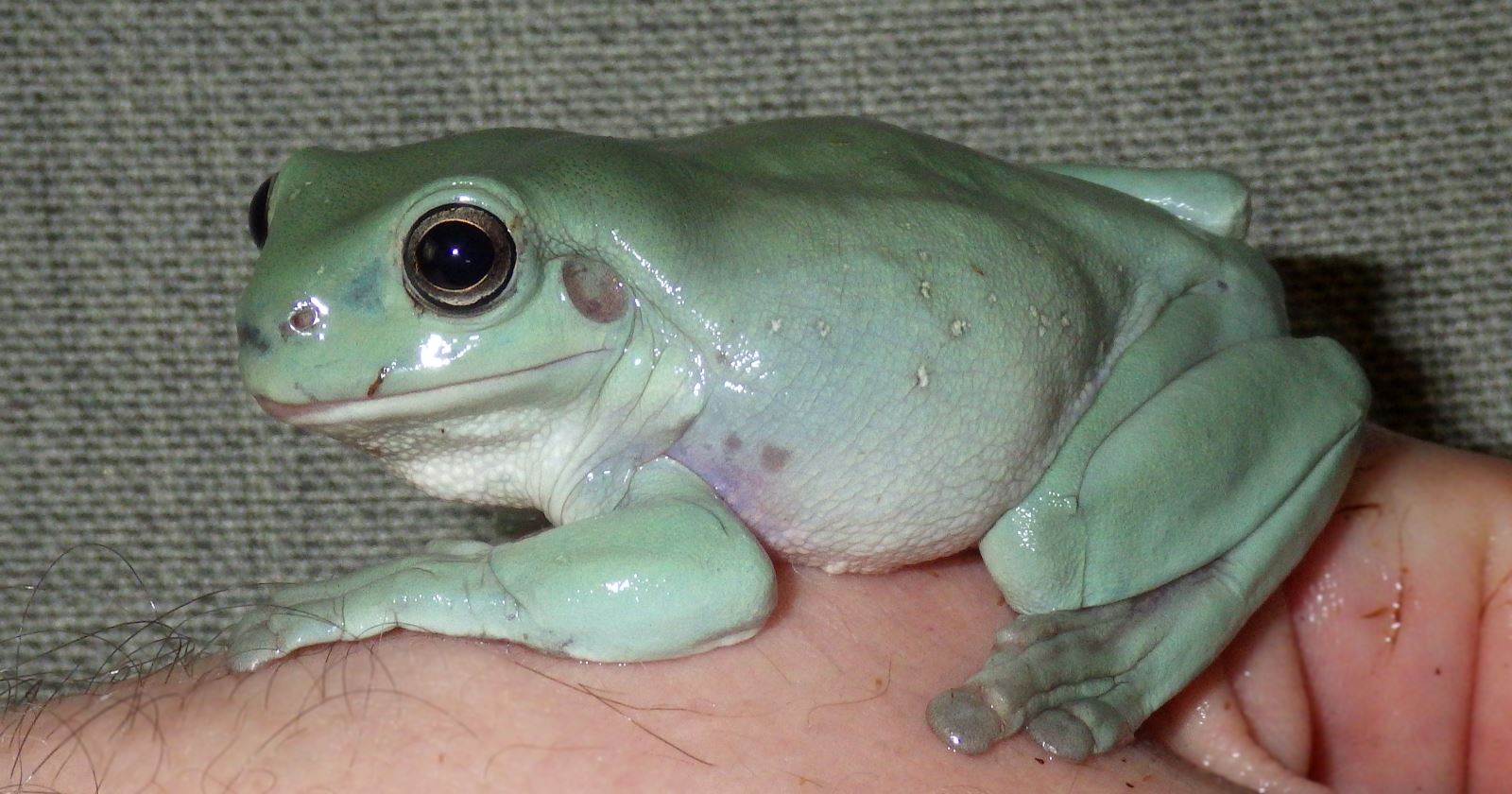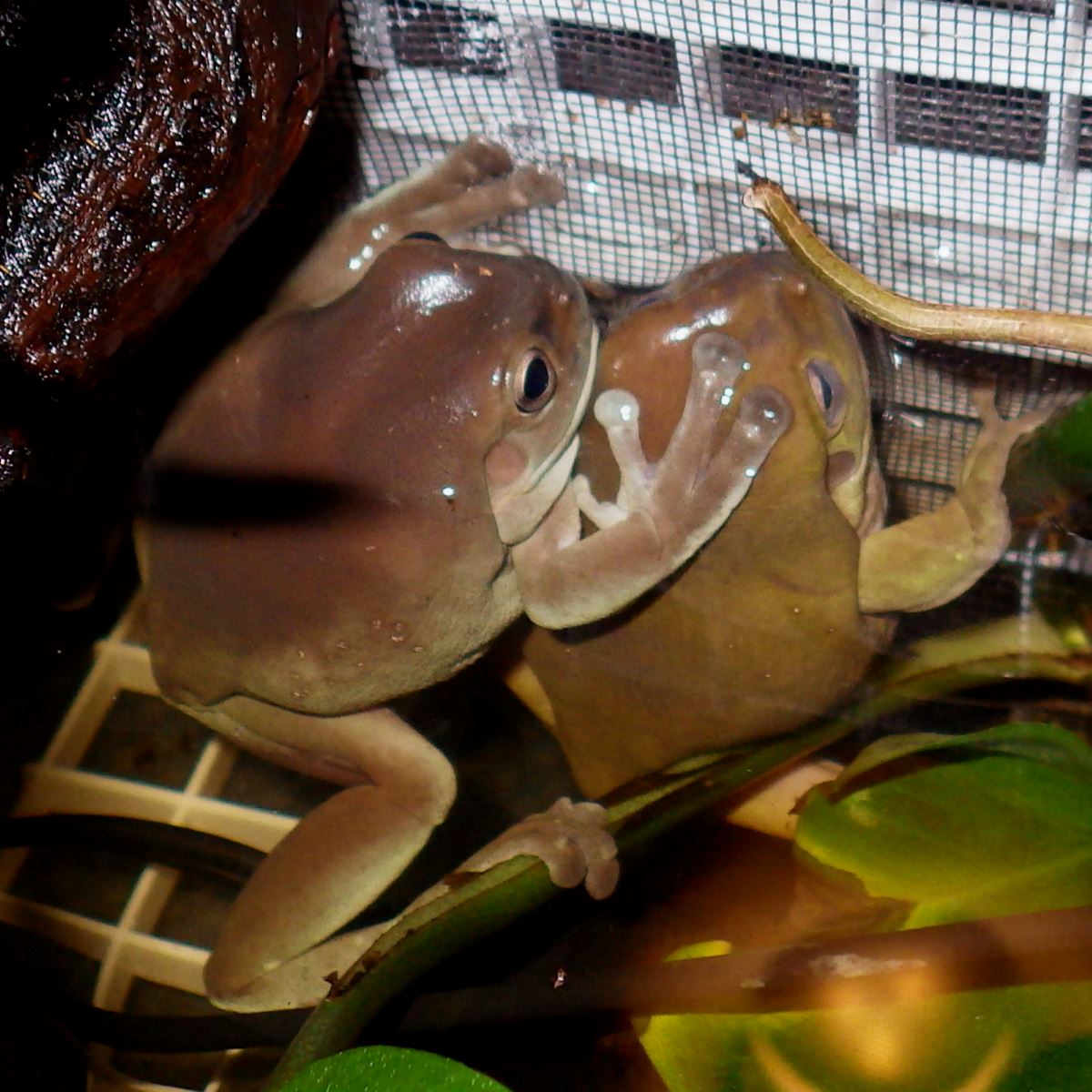The White’s tree frog or dumpy tree frog as it is known in the pet trade, is a species of tree frog from the North-eastern part of Australia.
White’s tree frogs are not a desert species, they only live in wet tropical climates.

White’s tree frog (Litoria caerulea), Toronto Zoo.
White’s tree frogs are popular pets, especially because they are one of the few frog species that tolerates being handled by humans. They are called dumpy frogs because they will eat constantly if they have access to food, and they will become rather fat. Owners of White’s tree frogs should exercise care not to grossly overfeed them, because obesity brings up all sorts of health issues.

A blue White’s tree frog. These frogs have very little fear of humans and captive bred specimens often tolerate handling a lot more than most frogs do.
White’s tree frogs will eat all sorts of insects as well as larger prey items such as small mice. YouTube is full of videos of dumpy tree frogs eating various animals.
Like all frogs, White’s tree frogs secret toxins from their skin and parotoid glands. The secretion of White’s tree frogs contain compounds of particularly strong antibacterial and antiviral, even anti-fungal properties. Probably one of the reasons why these frogs are so resistant to diseases, particularly chytrid fungus infections, that decimate so many other amphibians. Litoria frogs came into focus when it was discovered that the chemicals secreted by White’s tree frogs and their close relatives can even kill the HIV virus without harming the host’s T cells.
Further Readings:
White’s Tree Frog.
White’s Tree Frog on reptilesmagazine.com.
White’s Treefrog Care Sheet on reptilesmagazine.com.
Frog Peptides Block HIV In Lab Study — ScienceDaily.
White’s Tree Frogs contribute to AIDS research on Examiner.com.




